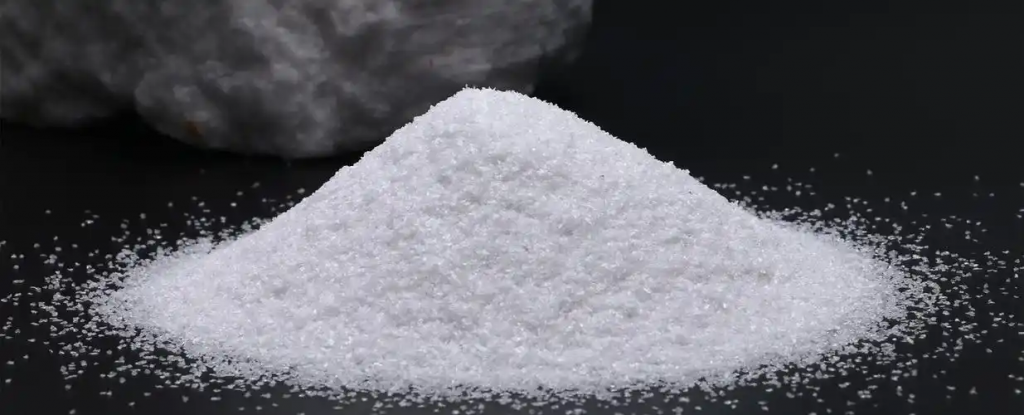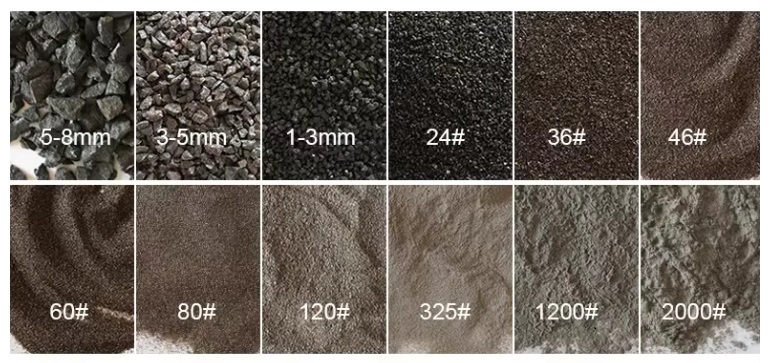Home / News & Blog / Abrasive Blog / White Fused Alumina vs. Brown Fused Alumina: Which Is Better for Your Application?
In the abrasive manufacturing industry, the selection of the right material can make or break the quality of your end products. Whether you’re producing grinding wheels, polishing products, or working in sandblasting and refractory applications, the choice of abrasive grain—White Fused Alumina (WFA) or Brown Fused Alumina (BFA)—will have a significant impact on your manufacturing efficiency, product performance, and costs.
In this article, we break down the key differences between White Fused Alumina and Brown Fused Alumina, so you can determine which abrasive grain best meets the needs of your specific application.

White Fused Alumina (WFA) White Fused Alumina is created by fusing high-purity bauxite in an electric arc furnace at temperatures exceeding 2000°C. This results in a pure, hard, crystalline structure with a high Al2O3 content of 99% or more. The material is characterized by its sharp edges, consistency, and low impurity levels, making it ideal for applications where precision and minimal contamination are critical.
Common Applications of White Fused Alumina:
Precision Grinding: Due to its sharpness and hardness, White Fused Alumina is ideal for fine grinding in industries like semiconductor manufacturing and aerospace, where surface integrity and accuracy are paramount.
Polishing: In applications such as jewelry polishing and metal finishing, where a mirror-like finish is required, WFA is preferred because of its ability to create ultra-smooth surfaces.
High-End Sandblasting: For applications like cleaning delicate surfaces in the automotive or aerospace industries, where contamination is a concern, WFA’s purity and consistency are critical.
Refractory Products: Used in the production of refractories that need to withstand high temperatures.

Brown Fused Alumina (BFA) Brown Fused Alumina is produced by fusing bauxite, coke, and other raw materials in an electric arc furnace at slightly lower temperatures than White Fused Alumina. This results in a more durable and tougher abrasive grain, with a lower purity level of around 95-97% Al2O3. While not as hard as WFA, BFA excels in applications requiring impact resistance and cost-efficiency.
Brown Fused Alumina is known for its durability, high toughness, and resistance to wear, making it the ideal abrasive for more heavy-duty tasks and rough grinding applications.
Common Applications of Brown Fused Alumina:
Heavy Duty Grinding: BFA is used extensively in metalworking for grinding steel, cast iron, and stainless steel where toughness and resistance to wear are required.
Sandblasting: It’s a preferred material for construction sandblasting, surface cleaning, and paint removal, particularly in large-scale industrial applications.
General-Purpose Abrasives: Brown Fused Alumina is frequently used in coated abrasives, such as sandpaper rolls, flap wheels, and cutting discs, where cost-effective solutions are needed for high-volume production.
Refractory Materials: Used in the manufacture of refractories for furnaces, kilns, and other high-heat industrial applications.
Key Differences Between White Fused Alumina and Brown Fused Alumina
1. Raw Materials:Brown Fused Alumina is made from bauxite, with the addition of coke and iron filings.
White Fused Alumina, on the other hand, is made from aluminum oxide powder, which is purer.
2. Color:Because White Fused Alumina has a higher aluminum oxide content, it’s white, while Brown Fused Alumina appears brownish-black due to the higher iron content.
3. Composition:White Fused Alumina has more than 99% aluminum oxide, while Brown Fused Alumina contains around 95% aluminum oxide.
4. Hardness:White Fused Alumina is slightly harder than Brown Fused Alumina. White Fused Alumina is a crystalline compound with excellent hardness and toughness, smaller crystal size, and good wear resistance. However, it’s more expensive and produced in lower quantities.
Brown Fused Alumina has medium hardness, making it less aggressive but cheaper and more cost-effective.
5. Performance:Brown Fused Alumina is known for its high purity, good crystallization, strong flowability, low thermal expansion, and corrosion resistance.
White Fused Alumina has high purity, self-sharpening properties, and is resistant to acids and bases, high temperatures, and maintains stable thermal properties. Comparatively, White Fused Alumina is harder than Brown Fused Alumina.
6. Usage:White Fused Alumina is typically used by high-end users for its good cutting power and excellent polishing effect. It’s used for materials like carbon steel, alloy steel, ductile iron, and hard bronze.
Brown Fused Alumina is more commonly used in the market for a wide range of general applications, especially in industries like quenched steel, high-speed steel, and high-carbon steel.
7. Smelting Process:Brown Fused Alumina is made by high-temperature melting of bauxite, going through an oxidation-reduction reaction.
White Fused Alumina is made by melting and crystallizing bauxite.
8. Applications:Brown Fused Alumina: Used in grinding wheels, sandblasting, free grinding, resin-bonded abrasives, coated abrasives, functional fillers, filtering media, and refractory materials.
White Fused Alumina : Used in ceramic manufacturing, resin-bonded abrasives, as well as sandblasting, polishing, grinding, precision casting, and high-end refractory materials.

|
Property |
White Fused Alumina (WFA) |
Brown Fused Alumina (BFA) |
|
Hardness |
Mohs 9 (Harder and sharper) |
Mohs 8-9 (More durable and tougher) |
|
Purity |
Higher purity (99%+ Al2O3 content) |
Lower purity (typically 95-97% Al2O3) |
|
Applications |
Precision grinding, polishing, fine finishing |
Heavy-duty grinding, sandblasting, rough applications |
|
Heat Resistance |
Excellent thermal stability |
Good heat resistance, but slightly lower than WFA |
|
Cost |
More expensive due to higher purity |
More affordable, cost-effective |
The choice between White Fused Alumina and Brown Fused Alumina depends on several factors, including:
For Precision and High-End Finishing:
White Fused Alumina is the go-to choice for applications that require the highest precision and clean finishes. If you’re working in industries like electronics, aerospace, or optics, where precision is critical, WFA is your best option. Its sharpness and purity ensure a high-quality result in processes that demand the finest detail.
For Tougher, More Durable Applications:
If your needs are more focused on durability and toughness, especially for heavy-duty grinding or sandblasting, Brown Fused Alumina will provide the necessary toughness and wear resistance. It’s a great choice for industries like construction, automotive, and metalworking where impact resistance is key.
Cost Considerations: Brown Fused Alumina offers a great balance between performance and cost, making it ideal for industries that require high volume and cost-effective abrasives without sacrificing too much on performance. BFA is the more economical choice for general-purpose grinding and sandblasting.
Application Environment: If you’re working in high-heat environments (e.g., refractory materials or high-temperature furnace linings), both abrasives can be used, but White Fused Alumina’s higher purity makes it more suitable for high-temperature situations requiring minimal impurity interaction.
Production Process Tips: At DOMILL, we ensure that both White and Brown Fused Alumina meet rigorous quality control standards. Our electric arc furnace ensures a consistent fusion process, while the natural gas calcination tunnel kiln provides the precise temperature control needed to produce high-quality abrasive grains.
Maximizing Efficiency: From my experience, one key tip when selecting abrasives is to understand not just the material properties but also the specific machines and production conditions you’ll be working with. For example, Brown Fused Alumina may offer better cost benefits when used in high-volume grinding wheels for construction applications, but for finer, more delicate operations, White Fused Alumina is a clear winner.
When choosing between White Fused Alumina and Brown Fused Alumina, understanding your application’s requirements is crucial. If you prioritize precision, purity, and fine finishes, White Fused Alumina is the best choice. However, if you need a cost-effective, durable abrasive for heavy-duty tasks, Brown Fused Alumina is the way to go.
At DOMILL, we offer both types of abrasives, along with expert consultation to help you make the right choice based on your manufacturing needs. Contact us today for tailored advice on selecting the best abrasive grain for your operations.